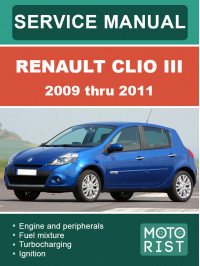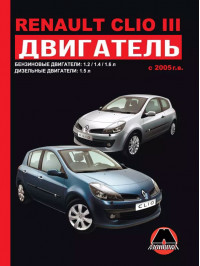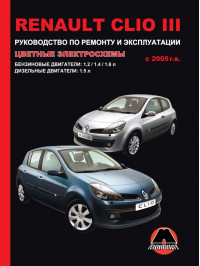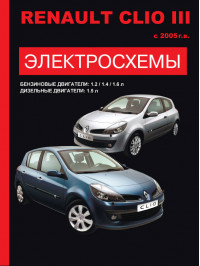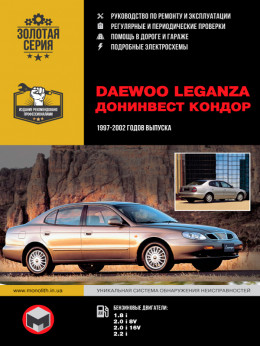Information on repair and maintenance of Renault Clio cars electronically
Renault Clio is a class B compact hatchback that has been produced by the automaker Renault since 1990. In addition to the hatchback and station wagon body styles, this car also has a 4-door sedan version, which goes by different names depending on the country. This model is known as Renault Symbol, Renault Clio Classic, Renault Clio Symbol, Renault Clio Sedan, Renault Clio Tricorps and Renault Thalia in different countries.
The Renault Clio model was first presented at the Paris Motor Show in the autumn of 1990 and soon began its promotion in the French market. In other European countries, this car went on sale only in March 1991. The Renault Clio was developed as a successor to the Renault 5, although the latter also remained in production until 1996 as a more affordable alternative.
Characteristics of Renault Clio
Initially, the car was equipped with gasoline engines of 1.2 and 1.4 liters, as well as diesel engines of 1.7 and 1.9 liters. Since 1992, gasoline engines have been modernized and received an injection system, which allowed them to comply with new environmental standards and improved efficiency.
Just a year after its release, Renault Clio has undergone minor changes. In particular, the Renault logo has been replaced with a new design, and the front seats have been updated.
In March 1994, the Renault Clio received its first significant update, known as the facelift. It included improvements in the exterior design and interior of the car. One of the most noticeable changes was the replacement of the front grille with a solid one, painted in body color. In addition, the bumpers have become larger and more rounded, and the taillights have become more rounded, giving the Clio a modern look.
In 1996, with the launch of the third phase of the model update, the 1.2-liter engine was replaced by a new, more economical 1,149 cc engine, which was first used in the Renault Twingo. This engine modification made it possible to significantly reduce fuel consumption. Changes have also been made to the cylinder block design of the 1.4-liter engine, making it more economical, although the power has decreased slightly.
Production of the second generation Renault Clio began in the spring of 1998, and the car received a more rounded and modern design compared to its predecessor. It was built on the Renault A (X65) platform. The new model introduced many innovations, such as the use of new materials. For example, the front fenders were made of plastic, and in some versions the hood was made of aluminum. This was done in order to reduce the weight of the car and reduce the cost of repairs.
Initially, the range of engines remained the same (petrol 1.2 liters, 1.4 liters, 1.6 liters and diesel 1.9 liters). Subsequently, all gasoline engines were replaced with more powerful and economical versions with 16 valves.
In the spring of 2001, the exterior design was updated, the quality of the interior trim was improved, and a 1.5-liter diesel engine with direct fuel injection appeared in the engine range. These changes made the second generation Renault Clio even more attractive to buyers and confirmed its status as one of the company's important models.
The fifth generation Renault Clio, released in 2020, is built on a completely new CMF-B platform. Compared to previous platforms, 85% of new parts are used here. This architecture saved 50 kilograms of weight, as well as reduced noise levels by 1.5-2 decibels at speeds of up to 130 kilometers per hour. In addition, new driver assistants were introduced, based on a front camera and radar.
The basic version of the Renault Clio 2020 is equipped with a 1.0-liter SCe petrol engine and a 5-speed manual transmission. This engine is available in two versions - with a power of 65 and 75 horsepower. The range also includes two TCe turbocharged engines of 1.0 and 1.3 liters with a power of 100 and 130 horsepower, respectively, as well as a 1.5 liter Blue dCi diesel engine, available in versions with 85 and 115 horsepower.
Fuel consumption for the Renault Clio as standard is 6.1 liters per 100 kilometers in urban conditions and 4.1 liters on the highway.
Renault Clio service manual
Our website provides the opportunity for free viewing, purchase and downloading of repair books and operating instructions for Renault Clio cars in PDF format.
After purchasing the book, you can easily download it to your smartphone or tablet so that you always have the necessary information at hand if necessary. The repair manual will answer many of your questions, including:
- how to repair a car chassis;
- how to change the oil in a gearbox;
- how to detect and eliminate malfunctions in the cooling system;
- detailed description the electrical equipment of your car;
- steps required before repairing clutch pedal
The repair manual will help you save both time and money by providing you with the information you need to repair and service your Renault Clio.
The Renault Clio repair book provides instructions for performing various repairs, including replacing components and systems, diagnosing faults and much more. Proper maintenance and repairs keep your vehicle safe and reliable on the road.



